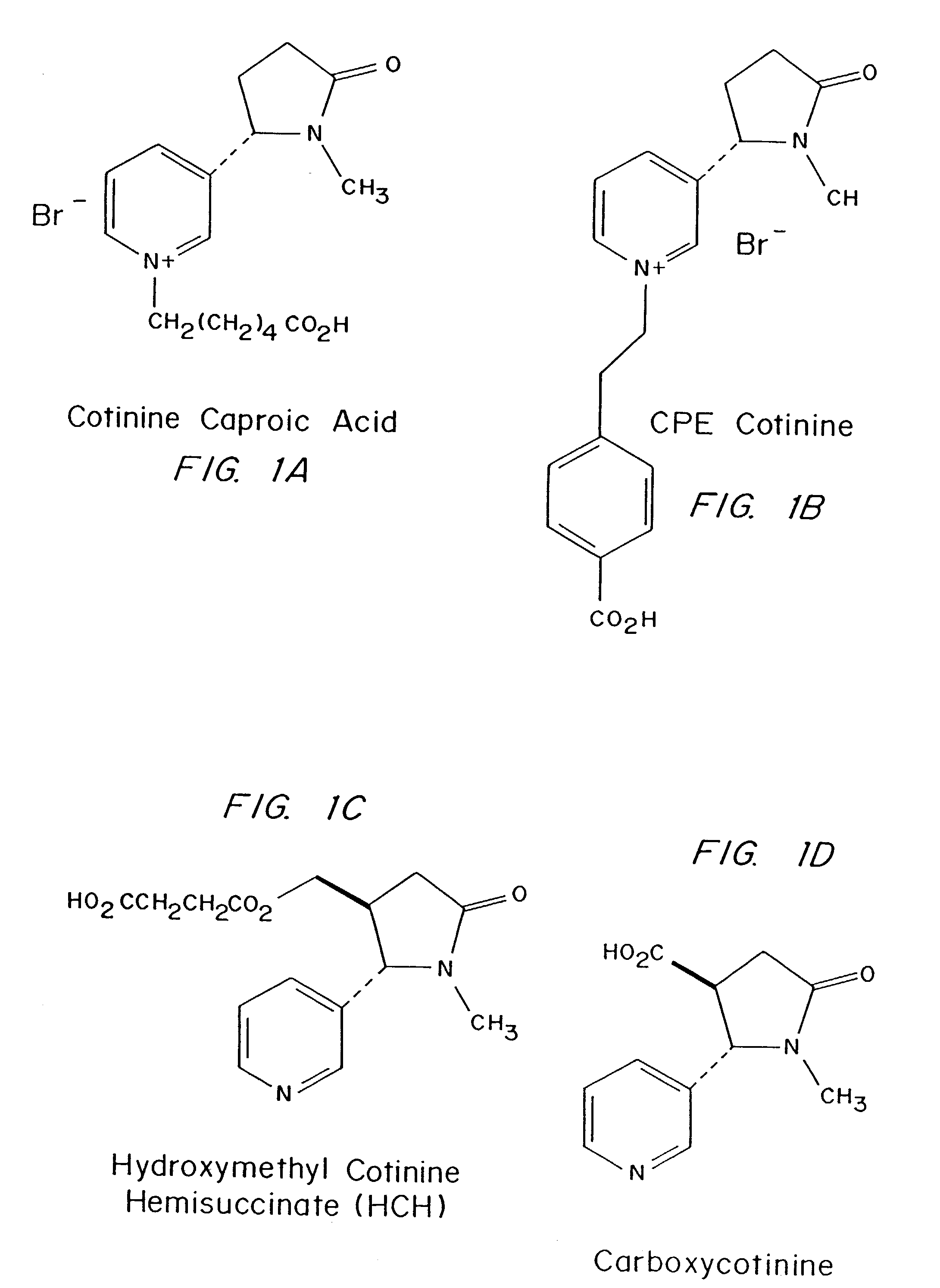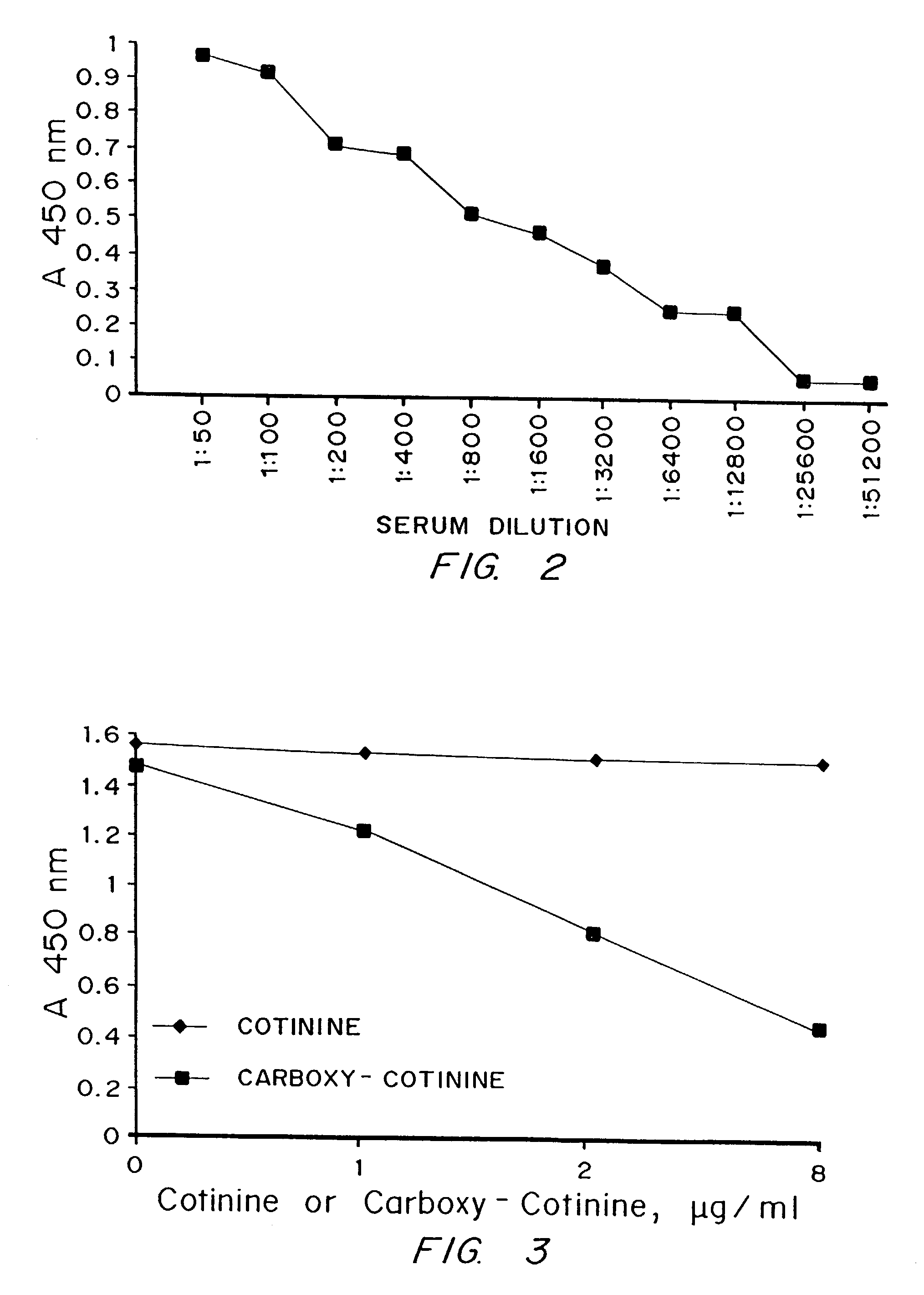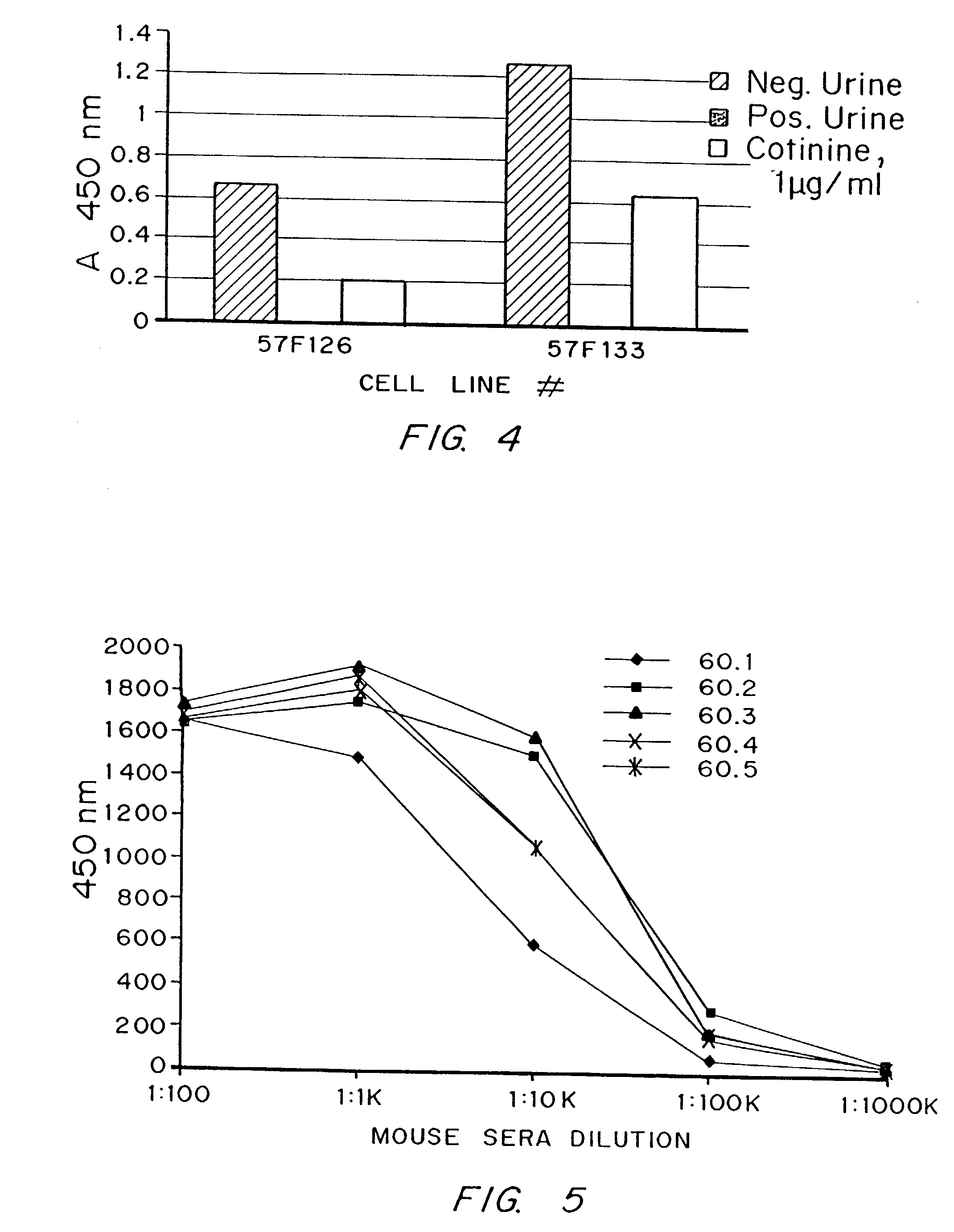Methods to improve immunogenicity of antigens and specificity of antibodies
a technology of immunogenicity and specificity, applied in the field of methods to improve the immunogenicity of antigens and specificity of antibodies, can solve the problems of high immunogenicity, low yield of useful clones, and difficult to make highly specific antibodies
- Summary
- Abstract
- Description
- Claims
- Application Information
AI Technical Summary
Benefits of technology
Problems solved by technology
Method used
Image
Examples
example 1
Preparation of Cotinine Derivatives which Yield More Specific Antibodies to Native Cotinine
[0060]Over the past 15 years, SEREX™ has successfully produced several polyclonal antibodies for cotinine, but has consistently failed in numerous attempts to raise monoclonal antibodies using conventional protocols. Other investigators, e.g. J. J. Langone, J. Immunol. Meth. 90, 203-213 (1986), also obtained cotinine monoclonal antibodies, but these antibodies are linker specific. U.S. Pat. No. 5,164,504, assigned to Abbott, disclosed preparation and use of two cotinine immunogens which yielded antibodies with very low titers. Monoclonal cotinine antibodies are commercially available, but have little or no practical utility.
[0061]Possible explanations for the problems with cotinine are its small size and low immunogenicity. Cotinine, a major metabolite of nicotine, is also structurally related to several nicotinic acid derivatives which are present in mammalian plasma and tissues. Using conven...
example 2
Preparation of Hb A1C Immunogens and Immunization Protocols to Produce Highly Specific Antibodies
[0092]It is difficult to get an antibody to distinguish between HbAo and HbA1c, as the difference is only one small sugar molecule. Sugars are poor immunogens and indeed the antibody methods on the market generally do not distinguish between a sugar and any other small change at the sugar site. General methods have therefore been developed to increase the immunogenicity of these glycoproteins and other poor immunogens, by altering the immunogenicity of the immunodominant epitope(s). The method utilizes an immunogen which is composed of a glycated peptide mimic of the glycated peptide sequence which is the target epitope, wherein the peptide mimic is constructed to conformationally mimic the conformation of the peptide in the native protein, the peptide mimic contains no charged groups or other immunodominant group, and the peptide mimic is connected to a spacer sequence equivalent to a p...
PUM
| Property | Measurement | Unit |
|---|---|---|
| concentrations | aaaaa | aaaaa |
| concentrations | aaaaa | aaaaa |
| pH | aaaaa | aaaaa |
Abstract
Description
Claims
Application Information
 Login to View More
Login to View More - R&D
- Intellectual Property
- Life Sciences
- Materials
- Tech Scout
- Unparalleled Data Quality
- Higher Quality Content
- 60% Fewer Hallucinations
Browse by: Latest US Patents, China's latest patents, Technical Efficacy Thesaurus, Application Domain, Technology Topic, Popular Technical Reports.
© 2025 PatSnap. All rights reserved.Legal|Privacy policy|Modern Slavery Act Transparency Statement|Sitemap|About US| Contact US: help@patsnap.com



